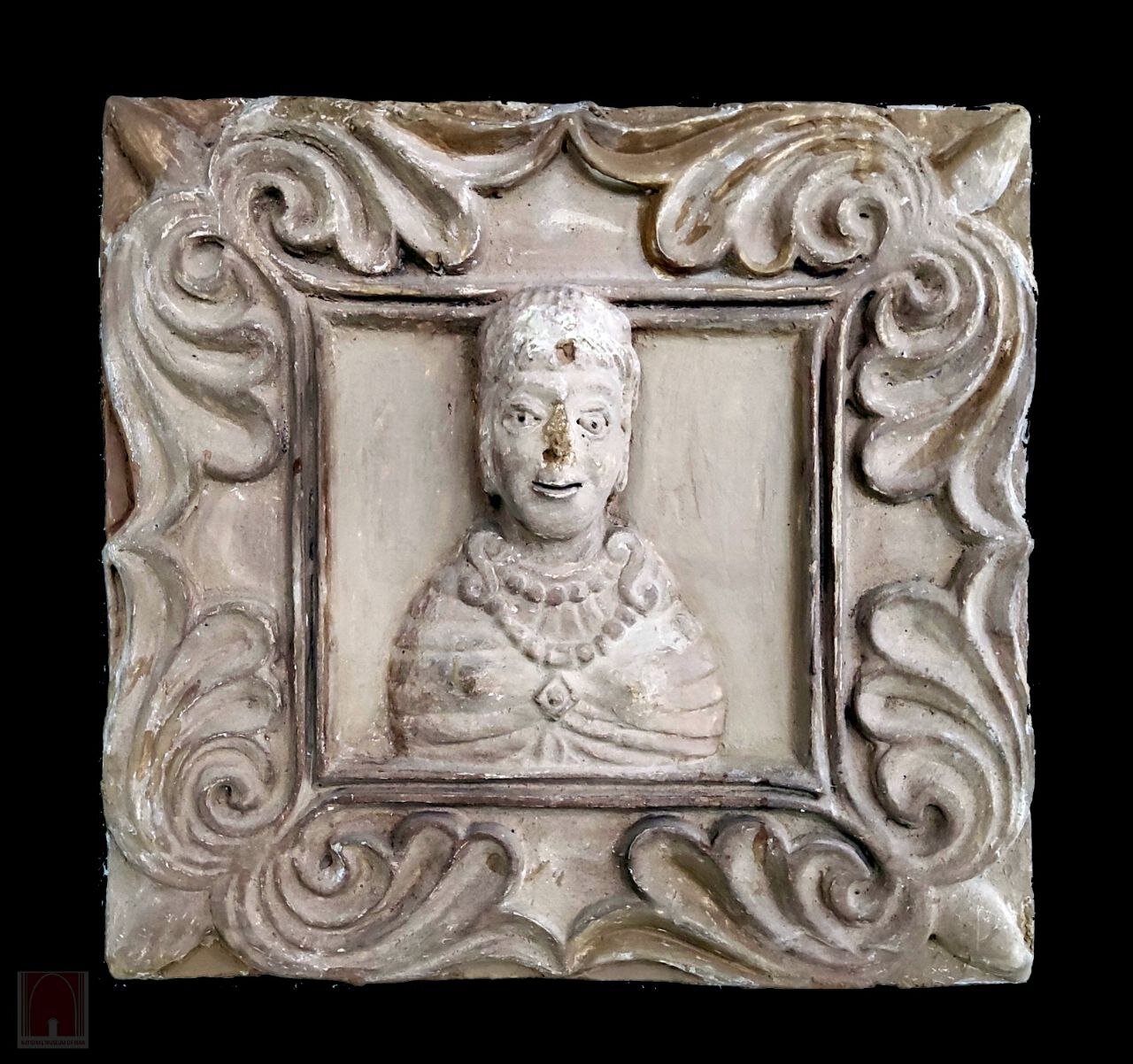Echoes of the Past: Stucco plaque of Sasanian lady

The pictured Sassanid-era stucco plaque set within a central square depicts the bust of a smiling woman—likely a Sasanian princess, suggested by her ornate adornments. Unearthed at Tepe Hessar in Damghan, modern-day Semnan province, it dates to the late 6th or early 7th century CE.
A diadem or ribbon encircles the neatly dressed hair, while three strings of apparently globular beads form a necklace with a lozenge-shaped pendant extending from a square center bead. A flowing ribbon is at either side of the head. A frame with floral pattern encloses the center panel. This stucco plaque was discovered from the hypostyle hall of the Sasanian Palace of Tepe Hessar, Damghan during excavations by the University Museum and the Pennsylvania Museum of Art in 1931-2 under the supervision of Erich F. Schmidt. Tepe Hissar is located three kilometers southeast of Damghan and on the southern edge of the Alborz Mountains, and the Sassanid Palace is located about two hundred meters to the southwest of the main complex of the site.
The discovery context and the diversity of decorative stucco fragments—recovered from the walls, dadoes, portals, roof, vaults, and the massive stucco columns, along with remnants of painted wall facings and polychrome murals—demonstrate that the hypostyle hall was the most elaborately adorned section of the palace. These stucco decorations featured intricate motifs, including boars, a woman’s bust, stags and does, vegetal designs, and a figure of probable heraldic significance, composed of Sasanian iconographic elements alongside other symbolic representations. As seen in other palaces of this period, plaster was employed extensively for both cladding and embellishment. The stucco ornaments were predominantly mold-made, typically in square or circular forms, and occasionally in merlon shapes, before being affixed to the walls. The combined use of stucco reliefs and painted murals constitutes a defining feature of Sasanian architecture, appearing not only in palatial interiors but also in ritual, religious, and private structures. The widespread use of architectural ornamentation is evident throughout the cultural expanse of the Sasanian period, from Central Asia to Mesopotamia. A significant part of this artistic style and tradition of ornamentation in the Central Asian region can be seen in sites such as Panjakent. The tradition of using wall decorations in Panjakent, like Persia and Mesopotamia, has been seen in public buildings (places of worship) and in the private homes of city residents.
AM
